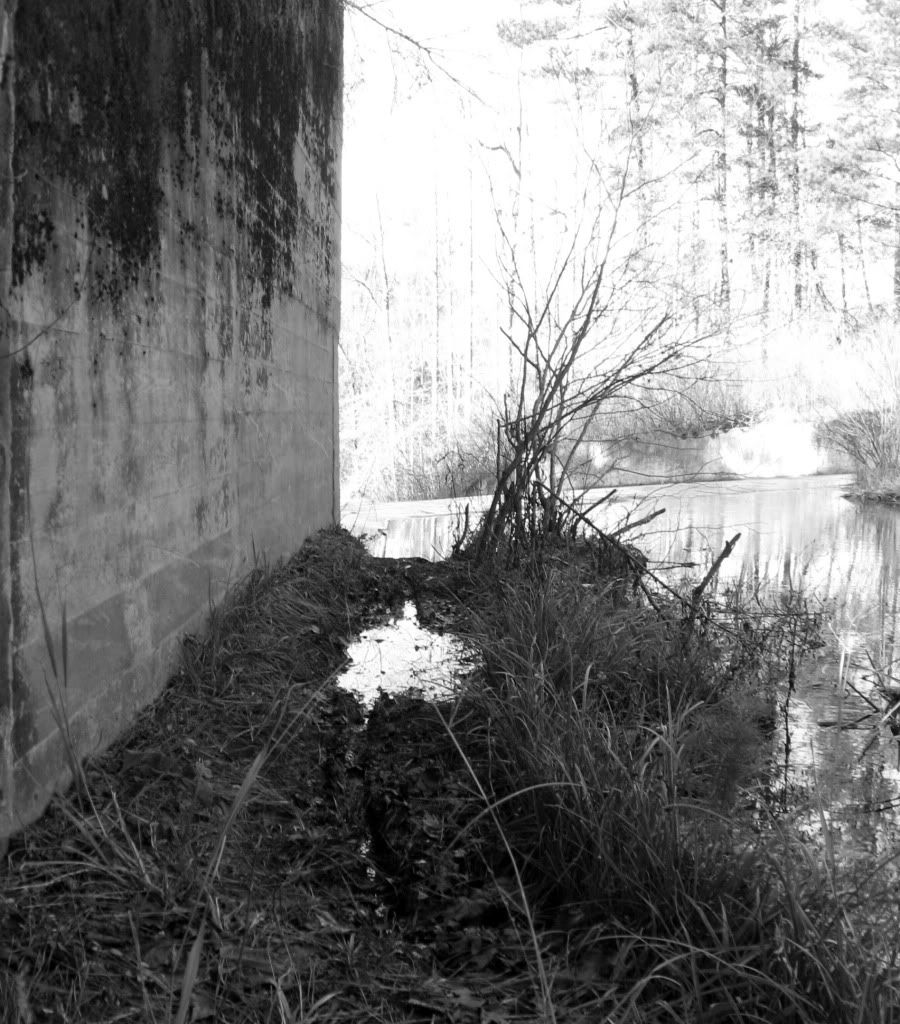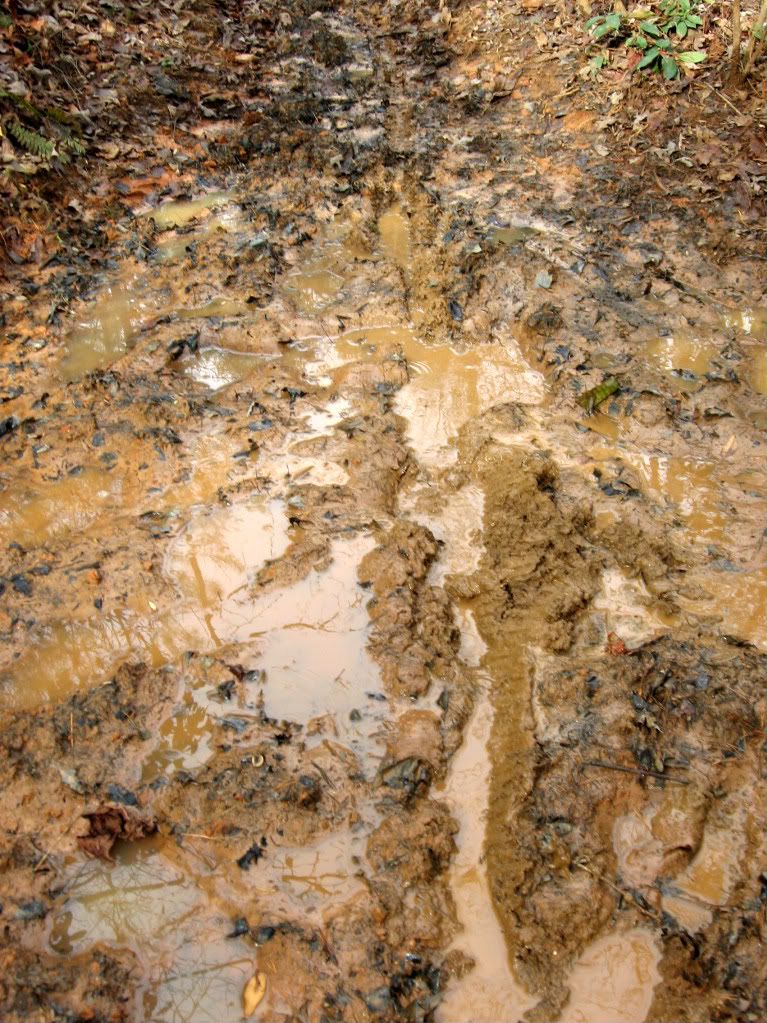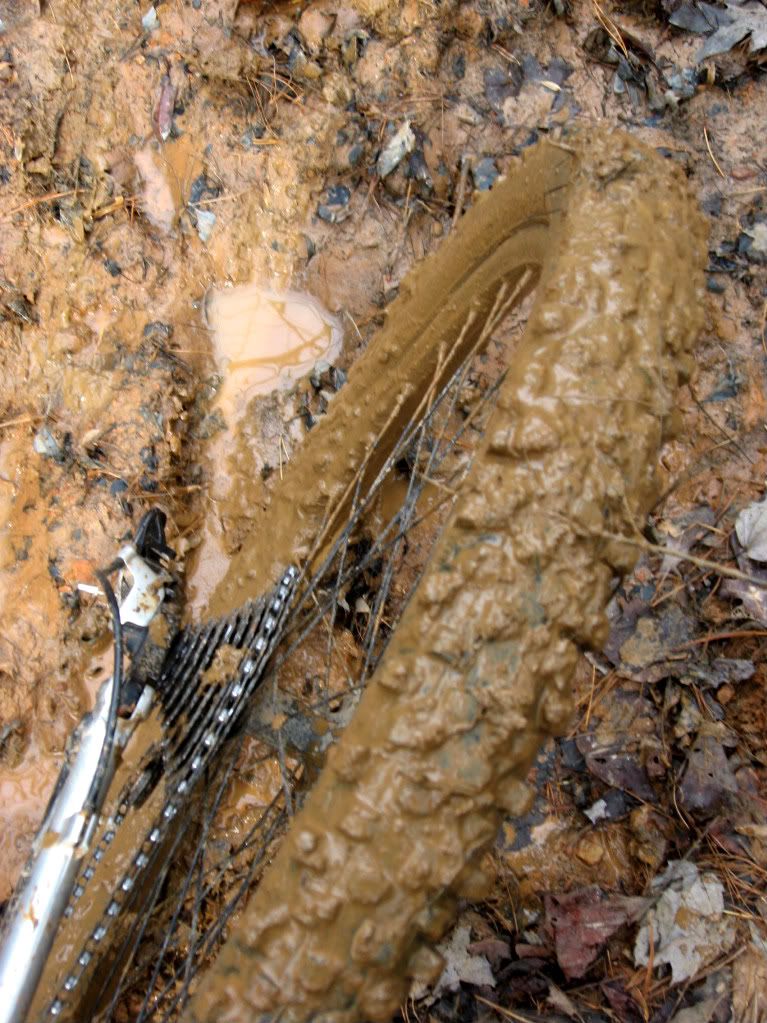Riding Through the Mud
Recently I was corresponding via email with one of the readers here on GregRidesTrails.com, and after concluding their message, they asked: "ps can you explain to me the best way to ride thru mud?" That's a question with more depth than meets the eye that deserves a detailed response.
When I responded, I began by saying that "The most socially acceptable way to ride though mud is to not." This is one of the main messages that IMBA is constantly trying to get across to mountain bikers: "Don't ride wet trails." Riding soggy singletrack can do incredible damage! One rider on a wet trail can often cause more damage than 100 on the same trail during dry conditions.
When the trails are wet, the best solution is to find an alternative means to get in those hours on the bike. This could mean hopping on the road bike and riding pavement for the day, or instead of tearing up the singletrack, grinding on the gravel roads instead.
However, it is my personal opinion that some people take this whole "don't ride wet trails" message way too far. The practical application of this key principle varies greatly depending on the region of the country.
Dry Areas
For instance, in dry, desert areas such as Moab and Fruita, rainy days are very few and far between. Not riding when the trails are wet may mean skipping singletrack a hand full of days a year.
Dry Areas
For instance, in dry, desert areas such as Moab and Fruita, rainy days are very few and far between. Not riding when the trails are wet may mean skipping singletrack a hand full of days a year.
On the front range of Colorado, rain is also not all that common, and the trails become very sensitive when wet. If you've ever ridden the Front Range, you'll know that normally they are hard and dusty. If a little rain gets added to the mix, they turn to a pliable clay that will hold a tire track for weeks.
 |
| Chronic Wet Spot |
Wetter Areas
On the flipside, there are areas of the country that have a much wetter climate. The Northwest immediately comes to mind, which is why wooden bridges can be found there in abundance. The wet conditions of the Northwest inadvertently gave birth to a new breed of mountain biking trails, which to this day are branded "North Shore."
Where the application of this governing principle gets tricky are in places that are caught somewhere in between these two extremes. Here in Georgia, we get a lot of rain throughout the year, and especially in the winter the trails can get very wet. We generally try to stay off the trails when they are soaking wet to avoid needless damage. However, if we were to always wait until they are bone dry, we may never get to ride singletrack. Due to the soil composition though, even if we hit the trails when its still a little on the wet side, they tend to heal very easily and in a day or two won't show any sign of our passing.
On top of this, there are some trails or sections of trail that are chronically soggy. Stream crossings, lowlands, areas near springs... some times riding through mud is completely unavoidable. In these instances, it is important to know how to handle the trail conditions appropriately.
 |
| Ride Straight Through the Mud |
How to Ride Through the Mud
When you do end up having to ride through the mud, here's how to do it:
- Ride straight through the muddy area. If there is a puddle or mud hole in the trail, don't go around it as this will widen the singletrack out and cause much more damage than if you just pile drive straight through it.
- Mud is slippery, therefore maintaining traction is the key to conquering it successfully. As in #1, taking as straight a line through the mud as possible is also beneficial because attempting to turn can easily cause your tires to slide out.
- Strive to maintain rear wheel traction. Stay seated to keep your weight over the rear wheel. Maintain a smooth, circular pedal stroke and avoid surges. When needed, "row the boat" by pulling back and down on your handlebars and leveraging the rear wheel into the mud and slime.
- This may seem inconsequential, but wearing a pair of glasses will be invaluable to keep the grit from your front tire out of your eyes. "If you can't see it, you can't ride it."
There you have it. Again, the key to riding in the mud is to maintain traction. The key to maintain traction is really to ride with finesse. Riding in mud is very similar to riding on ice or in snow. It's slippery, but if you don't make any sudden movements, you can probably pass through just fine!
Bike Care
A muddy ride can be really hard on your bike and its components. Mud can clog up your chain, derailleurs, brakes... and just about anything that moves. Shifting especially becomes nearly impossible after your derailleurs get caked with liquefied soil. To avoid any long-term damage to your mountain bike, give it a bath and lube job right after you get home. Don't leave the muck on your bike for longer than necessary, and definitely don't ride it again without making sure the components are grime-free. Leaving that nastiness in place can either cause unnecessary wear on your drive train, or may totally lock your whole system up making it impossible to ride without first cleaning it up.
After a muddy grind, be sure to clean your rig!
Your Turn: I would love to hear your thoughts on riding muddy trails. What do you think about the practical application of IMBA's message? What other tips would you provide for when the going gets unavoidably muddy?
Mountain Bike Skills
Catch up on the rest of the mountain bike skill series here. More skill-related posts are in the works!


2 comments:
At keg creek, a few of the crosses are muddy....I just gain speed, choose a line, and go. If you dont come to play, why come at all. lol. However, I just use judgement when riding. If its not wet but damp I will ride it (depending on the trail). If its muddy, I pass. Too much work goes into the trails to destroy them over selfishness.
Like you said, Judgement is key!
Post a Comment